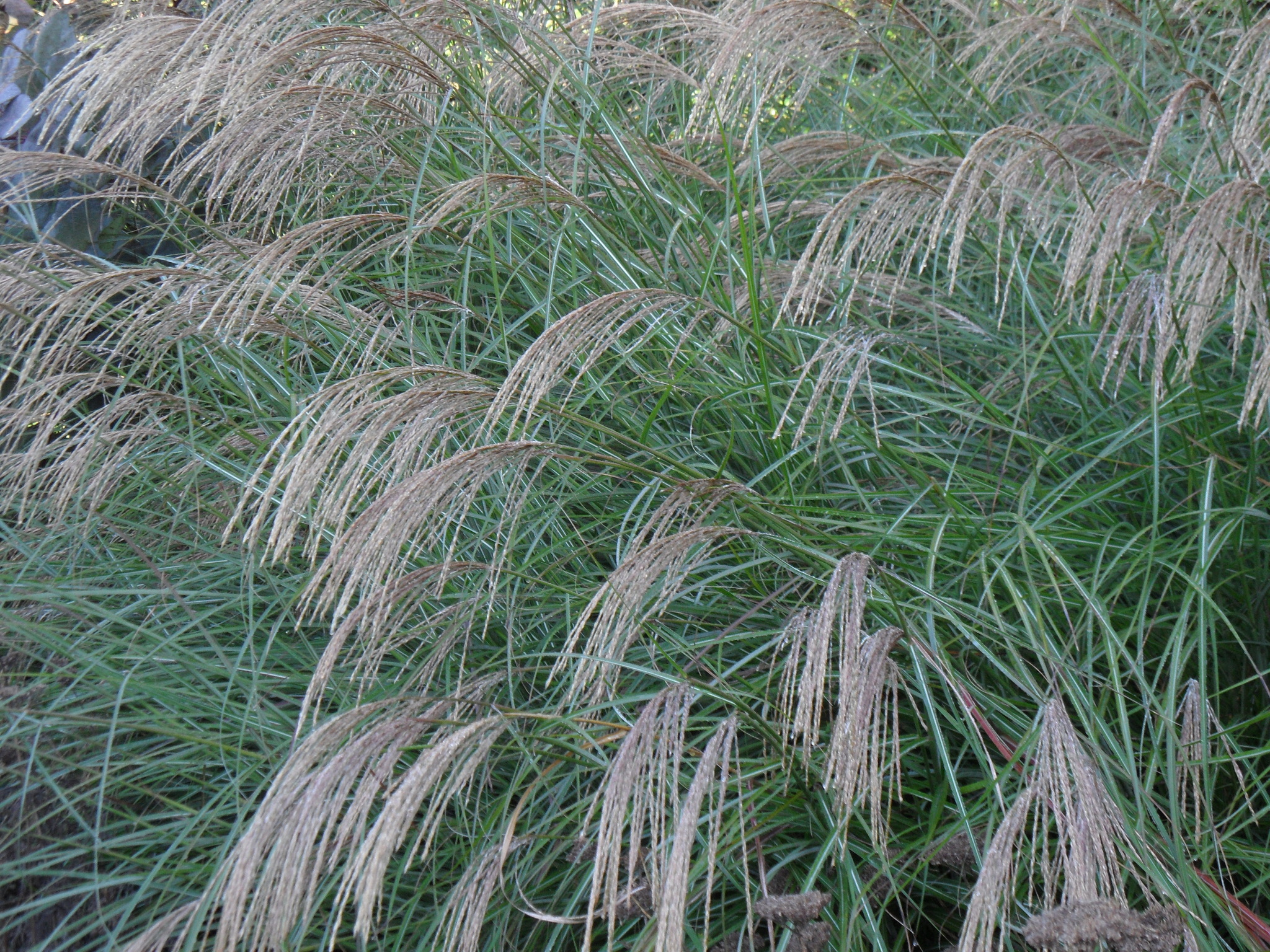
Erect clump-forming grass 2-3 m tall with thick rhizomes and flower stems about 2 m long. Leaves mostly basal. Leaf blade 50-70 cm long, 1-2 cm wide, with tooth-edged margins. Inflorescence of flower clusters, fan-shaped, silky white to purple with many branches 10-30 cm long; summer. Spikelets awned and with many white to purplish hairs.
Japan, China
Sparsely naturalised in Western Australia and in New South Wales along railway embankments in the lower Blue Mountains.
var. purpurascens Flower heads purple.
M. saccharifolius (Maxim.) Hackel is occasionally grown and differs chiefly in having awnless spikelets.
Source: (2005). Poaceae. In: . Horticultural Flora of South-eastern Australia. Volume 5. Flowering plants. Monocotyledons. The identification of garden and cultivated plants. University of New South Wales Press.

Miscanthus sinensis 'Gracillimus'
Leaves narrow.
Originated in the United Kingdom c. 1888.
Miscanthus sinensis 'Graziella'
Arching burgundy & orange narrow leaves with bronze autumn tints; flowers large white panicles.
Miscanthus sinensis 'Sarabande'
Leaves with broad central silver stripe.
Miscanthus sinensis 'Silberfeder'
Flower heads brownish-pink. ['Silver Feather']
Miscanthus sinensis 'Variegatus'
Leaves with a central, broad, longitudinal cream stripe. ['Vittatus']
Originated in the United Kingdom c. 1873.
Miscanthus sinensis 'Zebrinus'
Leaves unusually striped with transverse crossbars.
Originated in the United Kingdom c. 1877.